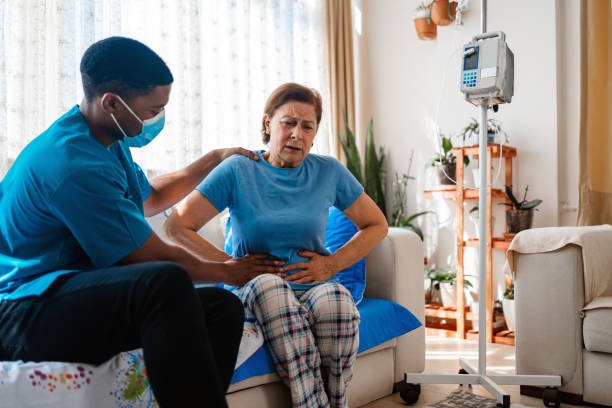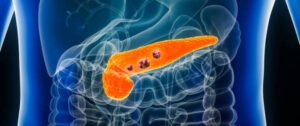
The Early Symptoms of Pancreatic Cancer Are Not Obvious! The Survival Rate After Diagnosis is Less Than 10%
Although pancreatic cancer has a low incidence rate, its fatality rate is quite high. According to the American Cancer Society, pancreatic cancer accounts for 7% of all cancer deaths in the United States. To understand pancreatic cancer, you first need to clarify the extent of cancer cell spread, which can be subdivided into five stages: Carcinoma in situ, also known as stage zero or stage zero. For more information, please read: What is Carcinoma in Situ? ? Anatomy of the evolutionary history of cancer, stage 1, stage 2, stage 3, and stage 4. As cancer cells Metastasis, it will start from the pancreas, then invade nearby cell tissues, Lymphatic system, blood system, and finally spread to other organs, such as liver and brain.
Since the symptoms of pancreatic cancer are not obvious in the early stage, many patients are diagnosed in the late stage. Calculated according to the five-year survival rate, it can be estimated that the average five-year survival rate of patients is only 9%. According to 105 years of cancer registration reports, patients with pancreatic cancer have a survival rate of less than 10%.
The early symptoms of pancreatic cancer are not painful. Be careful when jaundice occurs.
The reason why pancreatic cancer is scary is that it is not accompanied by pain and will only gradually become apparent in the final stage, including: jaundice, blood clots, elevated blood sugar, itchy skin, abdominal and back pain, and dark urine. , light gray stool, fatigue, flatulence, nausea and vomiting, loss of appetite, weight loss, depression, but even if these symptoms occur, it does not necessarily mean pancreatic cancer. Don’t panic, be sure to ask a professional doctor
In addition, there is a rare condition, which is Neuroendocrine Tumor (NET). Like pancreatic cancer, it can cause abdominal pain and gastrointestinal discomfort, but it can also cause insulinomas and Glucagonomas, Gastrinomas, Somatostatinomas and other symptoms.

There are many risk factors for pancreatic cancer. High sugar and high fat are also dangerous
The cause of pancreatic cancer is still unknown, but there are many risk factors, including smoking, obesity, pancreatic cyst, pancreatitis, and type 2 diabetes. , in addition, people who often consume high-sugar and high-fat foods should also pay attention, especially smoked products and processed meats, which may increase the risk of pancreatic cancer. People are reminded to eat more fruits and vegetables, and try to drink less coffee and Alcohol, maintaining a balanced diet is important.
It is also worth noting that gastric infections include hepatitis B and Helicobacter pylori, as well as exposure to pesticides and certain chemicals in work environments, such as cleaning work and metal processing plants. may increase the risk of pancreatic cancer.
Pancreatic cancer and family inheritance
According to the University of California San Francisco Health (UCSF Health), 5 to 10% of pancreatic cancer is hereditary or caused by gene mutations, and the chance is higher in immediate relatives.
In addition, other hereditary conditions include: Hereditary breast and ovary cancer, Hereditary colon cancer, Familial Atypical Multiple Mole Syndrome , (referred to as FAMMM), hereditary non-polyposis colorectal cancer (HNPCC, also known as Lynch Syndrome), Peutz-Jeghers Syndrome, Multiple Endocrine Neoplasia type 1 (MEN1) and Von Hippel-Lindau disease (VHL).
The average age of patients is 70 years old. Treatment is still difficult
The risk of pancreatic cancer also increases with age. The average patient is 70 years old, and it is more likely to occur in African Americans. The reasons for this need to be further studied. To treat pancreatic cancer, it is necessary to attack the cancer cells before they have spread to other body organs, and the earlier the better, the better. But even so, it is very difficult, because when other parts of the body are infected, surgery will not work. , you need to use higher-risk treatment methods, such as radiation therapy, chemotherapy, and target therapy. It can also be combined with light exercise, yoga, and meditation as auxiliary treatment, and according to professional Rest as directed by your doctor, but be aware of possible side effects and pain.













